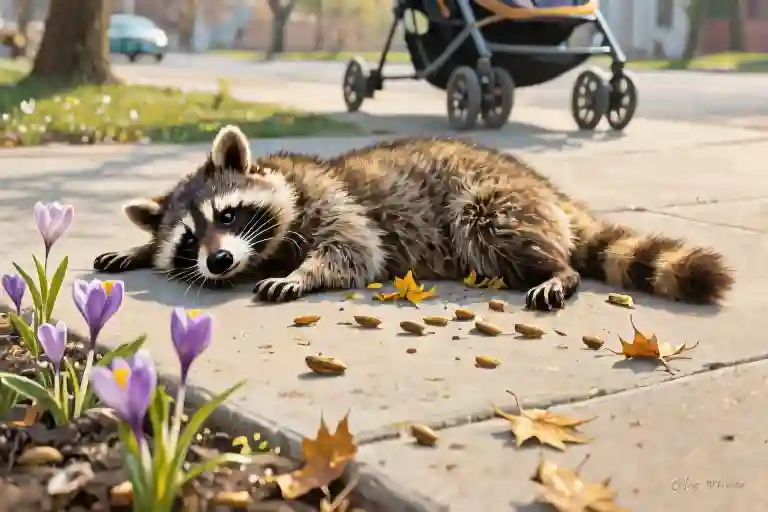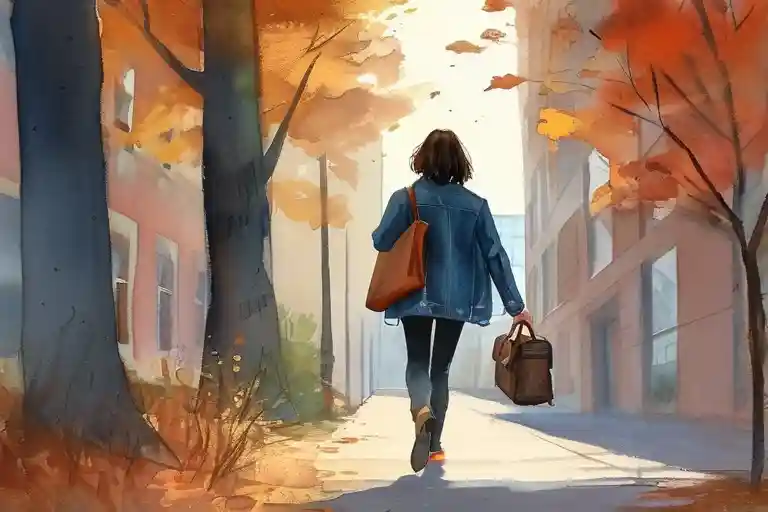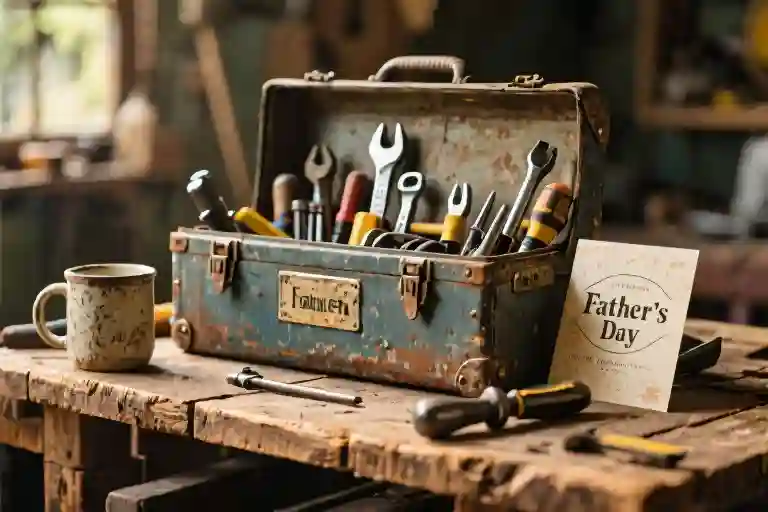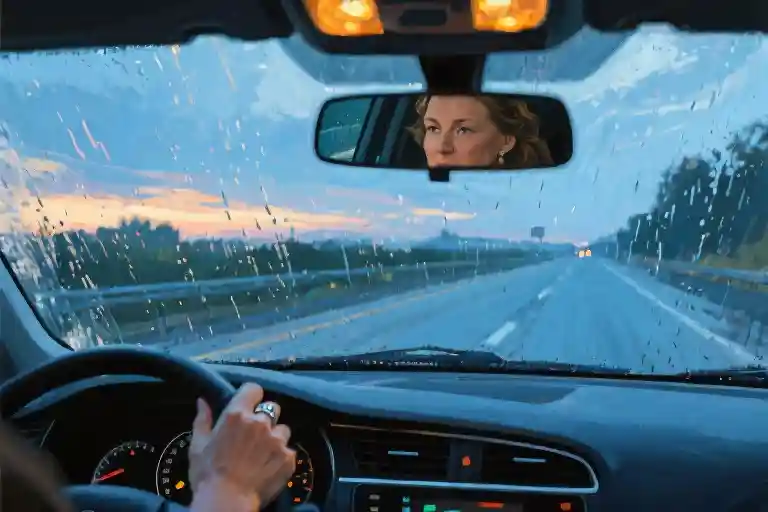We are a people of story. This truth resonates deeper during Holy Week, when ancient narratives of sacrifice and renewal pulse through our modern lives with undiminished power. The stories we carry – whether etched in sacred texts or stumbled upon during afternoon strolls – shape how we understand our place in this fragile world.
Last spring, when the first warm breeze finally dissolved Toronto’s winter grip, I loaded both boys into our double stroller. Isaiah, then three, kept pointing at crocuses pushing through thawing soil while his one-year-old brother giggled at sparrows fighting over breadcrumbs. The promise of ice cream and lakeside swings filled our conversation as wheels clicked over sidewalk cracks still healing from frost heaves.
That particular afternoon carried the golden quality I’ve come to recognize as holy ordinary time – sunlight pooling in children’s hair, sticky fingers clutching melting treats, the particular way toddler questions tumble out unfiltered (‘Why do ducks float, Daddy?’). We were deep in this sacramental mundanity when Isaiah’s finger suddenly stiffened toward the curb. ‘Look! Big sleepy dog!’
The shape lay motionless near a storm drain, fur matted with last night’s rain. As we approached, the distinctive bandit mask emerged – not a sleeping creature but a raccoon curled in final repose, one paw stretched toward the gutter as if reaching for something just beyond grasp. Maple seeds had begun collecting in its fur, early spring’s quiet tribute.
The Raccoon on the Sidewalk
The first real day of spring always carries that particular magic – the kind that makes you forget every gray morning and icy sidewalk that came before. That afternoon, the sunlight felt like forgiveness as I pushed the double stroller down our Toronto street, both boys strapped in and already sticky-fingered from the promised ice cream. Isaiah’s little legs swung rhythmically against the footrest, his sandals tapping out a song only three-year-olds can hear.
We’d barely gone three blocks when Isaiah’s pointing finger interrupted our sunlit rhythm. ‘Daddy, what’s that?’ His voice held none of the weight I’d soon feel. At first glance, it could have been a discarded winter glove, something dark and matted. But urban living trains your eyes to recognize shapes that don’t belong. The closer we got, the slower my steps became, until the stroller wheels stopped completely beside the thing.
Roadkill never looks like sleeping. There’s a particular stillness to death that even children sense – the way the raccoon’s belly didn’t rise with breath, how its famous clever paws lay stiff instead of curled. Spring sunlight glinted off its unblinking eyes. I felt Isaiah’s body lean forward against the stroller harness, his curiosity pressing against my sudden desire to turn him away.
‘Why isn’t it moving?’ His question hung between us, simple and devastating. In the backseat, his baby brother babbled at a sparrow hopping near the curb, blissfully unaware of our first real conversation about mortality. My fingers tightened on the stroller handle, calculating explanations. Do three-year-olds understand ‘dead’? Should I say ‘sleeping’ and lie, or speak truth and risk nightmares?
All the while, pedestrians kept passing us. A jogger sidestepped the scene without breaking stride. A woman talking on her phone didn’t even glance down. The normalcy of their movements made the moment stranger – shouldn’t the world pause for this small tragedy? I imagined calling the city’s animal services, already picturing the bureaucratic voice asking for cross streets while my sons waited beside death’s unceremonious classroom.
That’s when I noticed the ants. They’d already found the raccoon, moving in disciplined lines across its fur like nature’s cleanup crew. Isaiah saw them too. ‘The buggies are sharing,’ he announced, and something about his phrasing – the innocent assumption of community in decay – caught in my throat. Holy Week stories flooded my mind unbidden: the body taken down, the women preparing spices, the quiet horror before resurrection. I’d never considered how much death smells like wet fur and spring earth.
We stood there longer than necessary, the three of us and the raccoon and the ants, in a silence that felt sacred despite the littered gum wrappers and distant traffic sounds. Eventually, Isaiah lost interest and demanded his ice cream again. As I pushed the stroller away, I kept glancing back at that dark shape on the pavement, thinking about all the ways we walk past death every day without seeing it – until suddenly, unavoidably, we do.
The Weight of Small Explanations
My three-year-old’s hand tightened around mine as we stood over the still form. ‘Daddy, why is it sleeping on the road?’ Isaiah’s question hung between us, his voice carrying that particular brightness children reserve for terrible misunderstandings. The afternoon sun warmed the back of my neck, incongruously cheerful against the asphalt where life had left this creature.
I knelt, one knee pressing into the gravel shoulder, and immediately regretted it. The posture felt too much like prayer, too close to the way I’d seen people kneel at Good Friday services. My throat tightened around half-formed explanations about forever sleep and broken bodies, phrases that suddenly seemed borrowed from some other, heavier conversation.
‘Its story ended, buddy,’ I finally said, watching his small face process words I knew he couldn’t map to meaning. A lady pushing a stroller passed us without slowing, her eyes flickering toward the scene with the mild annoyance of someone calculating alternate routes. That indifference stung more than I expected – the way the world moves determinedly around death unless forced to notice.
Later, walking home with uneaten ice cream, Isaiah kept twisting in his seat to look backward. ‘Will the raccoon wake up when we come back?’ The question echoed something I’d heard in church the previous Sunday – something about tombs and third days. I thought of all the ways we try to soften endings for children, how we speak of lost pets ‘crossing the rainbow bridge’ or grandparents ‘becoming stars.’ Comforting lies that prepare no one for the blunt truth of a carcass baking on hot pavement.
A cyclist swerved around us, close enough that I pulled the stroller sharply to the side. He never looked back, never saw the way my son’s shoes kicked absently against the footrest, marking time to some internal rhythm of questions. There’s a particular loneliness in parenting moments like these – when you realize you’re the designated translator between your child and a world that won’t bother speaking gently.
That night, washing peanut butter off Isaiah’s fingers before bed, his reflection in the bathroom mirror asked: ‘Did Jesus have to call the city when he died?’ The water ran cold over my wrists. Somewhere between sidewalk and bedtime, my failed explanation had tangled with fragments of Holy Week stories in his mind. I watched our doubled image – his head tilted in perfect trust, my mouth opening and closing like a fish – and understood this would be the first of many times I’d fumble the sacred task of explaining endings to someone just learning beginnings.
The Sacred in Small Things
That dead raccoon on the sidewalk stayed with me longer than I expected. Its matted fur, the odd angle of its paw, the way my three-year-old kept twisting in his stroller to look back at it – these details clung like burrs to my memory. At the time, I’d focused on the practical: shielding the kids from the sight, considering who to call for removal, calculating how to explain death to a toddler. But later, when the ice cream was eaten and the playground laughter faded, something about that mundane moment felt unexpectedly weighted.
John 12:24 came to mind: “Unless a grain of wheat falls into the earth and dies, it remains alone; but if it dies, it bears much fruit.” We often miss how the sacred threads itself through ordinary moments – a dead animal on pavement, a child’s persistent questioning, our own hesitation between action and avoidance. The raccoon wasn’t just roadkill; it became a reluctant teacher about cycles and connection, about how even small deaths carry echoes of greater stories.
Modern life trains us to overlook these micro-moments of holiness. We step over cracks in sidewalks without considering what might be growing beneath them. We mute suffering with earbuds and busyness, missing the raw material of spiritual awakening that exists in backyard gardens and grocery store lines. The checkout clerk’s tired eyes, the dandelion pushing through concrete – these are today’s burning bushes if we’d slow down to notice.
Perhaps holiness isn’t found in grand gestures but in daily attentiveness. That raccoon’s body, had I left it undisturbed, would have nourished the soil beneath the maple trees. My children’s questions about death planted seeds for future understanding. Even my discomfort – that itchy sense of responsibility – was its own kind of prayer.
Where do you encounter the sacred in your ordinary? Is it in the steam rising from your morning coffee, or the way your dog waits patiently by the door? Maybe it’s in the quiet ache you feel passing homeless encampments, or the unexpected beauty of graffiti on a construction wall. We’re surrounded by unremarkable miracles if we adjust our seeing.
That spring afternoon held all the elements of Holy Week – innocence and mortality, sacrifice and renewal – compressed into a single city block. The challenge isn’t to manufacture sacred moments, but to recognize they’re already here, woven into our daily fabric like gold threads in plain cloth. The divine speaks in raccoons and melting ice cream cones as surely as in scripture or stained glass.
What small moment today might carry unexpected weight if you held it up to the light?
The stroller wheels crunched over last winter’s leftover gravel as we paused by the roadside. My three-year-old’s finger jabbed toward the matted fur mound—that ‘something large, fuzzy, and very still’ now undeniably a raccoon in final repose. Spring sunlight glinted off its unblinking eyes, the same rays that moments ago had us squinting toward the ice cream shop.
Isaiah’s sandal kicked pebbles near the animal’s tail. ‘Daddy,’ his voice carried that particular pitch children reserve for pressing mysteries, ‘why won’t it play with me?’ Behind us, his baby brother babbled at sparrows. The contrast between their vibrancy and the rigid paws before us lodged in my throat like a peach pit.
I knelt, one hand steadying the stroller, the other hovering above that wild body. Not touching—though part of me wanted to brush the dirt from its muzzle, to somehow apologize for this undignified sidewalk ending. The raccoon’s stillness felt heavier than sleep, more absolute. A truth too blunt for ‘gone to heaven’ euphemisms yet too complex for toddler comprehension.
‘Its story is finished,’ I heard myself say. The words tasted insufficient even as I spoke them. Somewhere in my periphery, Holy Week’s narrative of sacrifice and renewal pulsed—not as sermon but as quiet counterpoint to this small death. That grand story of torn temple veils and transformed tombs suddenly intersected with roadkill on a Toronto sidestreet.
A woman hurried past with grocery bags, her gaze deliberately averted. The raccoon’s universe—its midnight scavenges, its secret den, whatever battles or joys filled its days—had contracted to this: an obstacle for pedestrians to skirt. I fumbled for my phone, thumb hovering over the city services number, but didn’t dial. Not yet.
Wind carried the scent of thawing earth and something faintly metallic. Isaiah crouched, his overalls grazing pavement, utterly unafraid. In his eyes I saw the same wonder he’d later direct at Easter lilies and empty crosses—the raw curiosity before life’s great thresholds. Perhaps holiness lives in these intersections where innocence meets mortality, where parental instincts collide with cosmic questions.
Every creature carries a universe. Even this one. Especially this one.
How would you tell its story?





